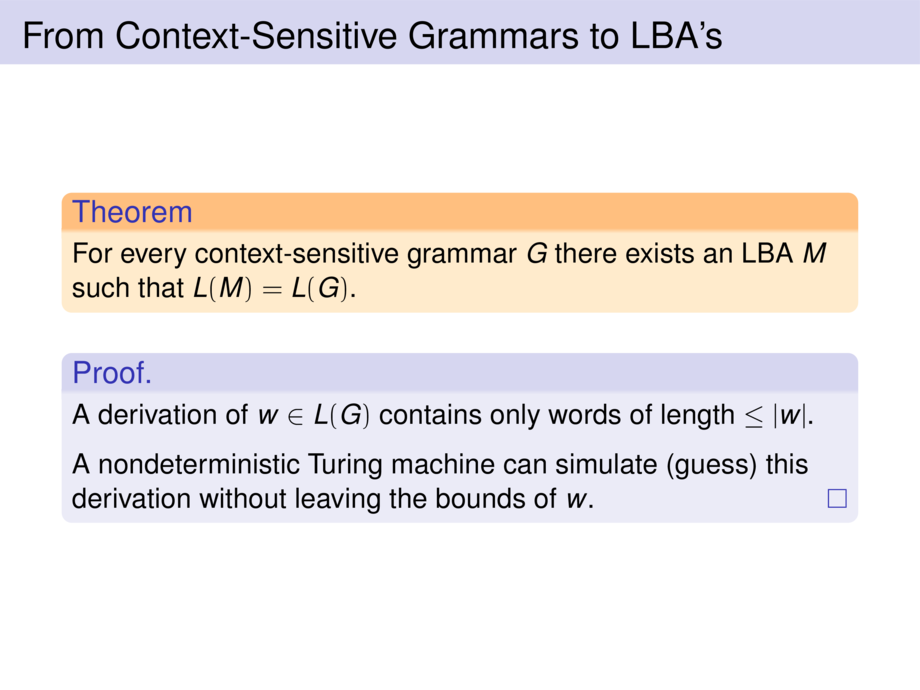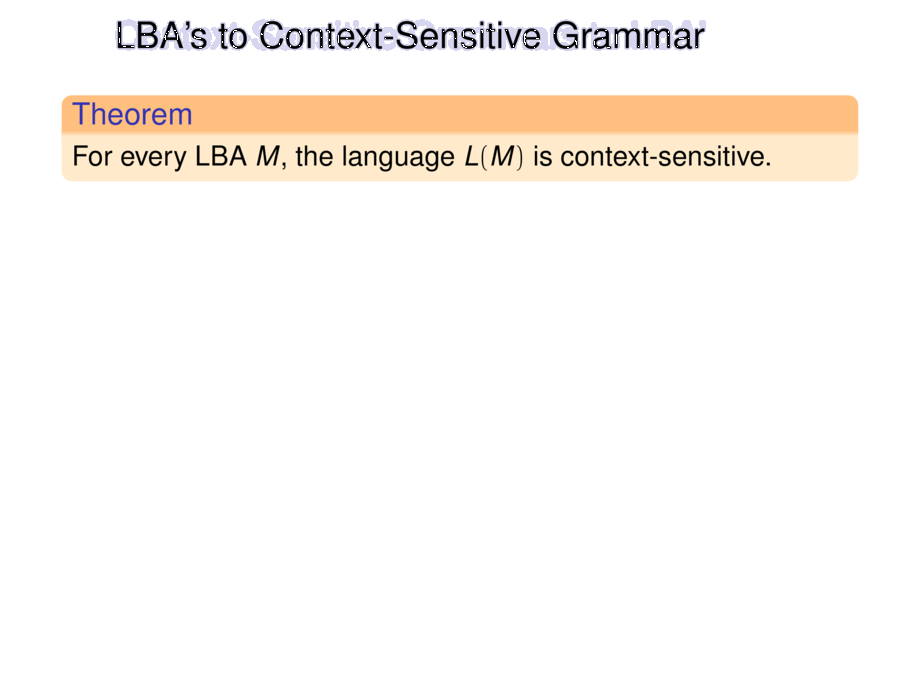



































































































12/43
\begin{frame}{From LBA's to Context-Sensitive Grammars}
\begin{goal}{Theorem}
For every LBA $M$, the language $L(M)$ is context-sensitive.
\end{goal}
\pause
\vfill
\begin{block}{Proof sketch.}
As before, build an unrestricted grammar $G$ with $L(G) = L(M)$.
\pause\medskip
All productions rules are context-sensitive, except for:
\begin{talign}
\alert{\Box \to \lambda}
\end{talign}
\pause
However, a linear bounded automaton does not use $\Box$\,!\\
(It never leaves the borders of the input word.)
\pause\medskip
Therefore, we can drop
\begin{itemize}
\item the rule $\Box \to \lambda$\pause, and
\item the rules $S\to V_\Box^\Box S \mid S V_\Box^\Box$.
\end{itemize}
\pause
(In step 1, we derive from $S$
a word $V_{q_0[a_1}^{a_1}V_{a_2}^{a_2}\cdots V_{a_{n-1}}^{a_{n-1}}V_{a_n]}^{a_n}$.)
\end{block}
\end{frame}

